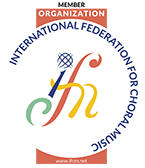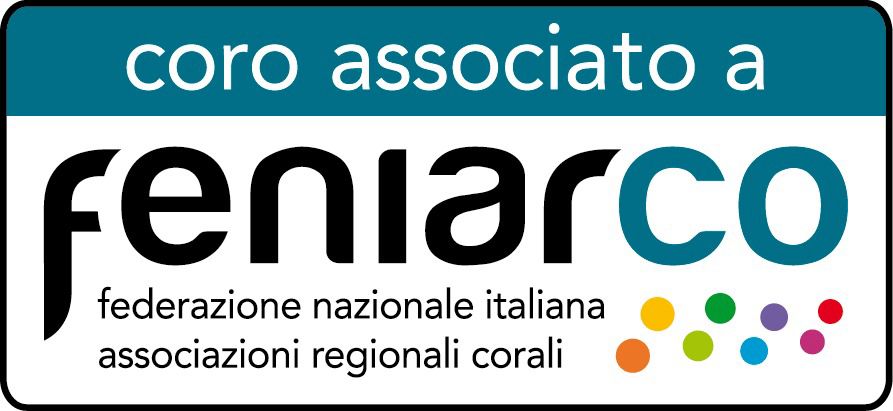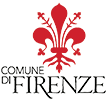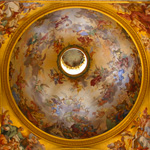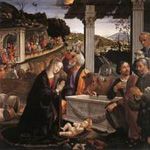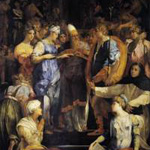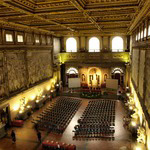 |
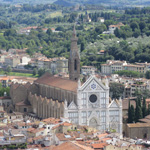 |
 |
 |
| click here for the photogallery | |||
Florence is the capital city of the Italian region of Tuscany and of the province of Florence.
The city lies on the River Arno and is known for its history and its importance in the Middle Ages and in the Renaissance, especially for its art and architecture. A centre of medieval European trade and finance and one of the wealthiest cities of the time. Florence is considered the birthplace of the Renaissance. A turbulent political history included periods of rule by the powerful Medici family, religious and republican revolution. From 1865 to 1870 the city was also the capital of the Kingdom of Italy. Florence is often known as the "Jewel of the Renaissance".
The historic centre of Florence attracts millions of tourists each year and was declared a World Heritage Site by UNESCO in 1982. Florence is widely regarded as one of the most beautiful cities in the world, and its artistic, historic and cultural heritage and impact in the world remains to this day. The city has a major impact in music, architecture, education, cuisine, fashion, philosophy, science and religion. The historic centre of Florence contains elegant squares (piazzas), Renaissance palaces (palazzi), academies, parks, gardens, churches, monasteries, museums, art galleries and ateliers. The city has also been nominated, according to a 2007 study, as the most desirable destination for tourists in the world. The city boasts a wide range of collections of art, especially those held in the Pitti Palace and the Uffizi, (which receives about 1.6 million tourists a year). Florence is arguably the last preserved Renaissance city in the world and is regarded by many as the art capital of Italy. It has been the birthplace or chosen home of many notable historical figures, such as Dante, Boccaccio, Leonardo da Vinci, Botticelli, Niccolò Machiavelli, Brunelleschi, Michelangelo, Donatello, Galileo Galilei, Catherine de' Medici, Luigi Cherubini, Antonio Meucci, Guccio Gucci, Franco Zeffirelli, Salvatore Ferragamo, Roberto Cavalli, and Emilio Pucci.
MUSIC
Florence became a musical centre during the Middle Ages and music and the performing arts remain an important part of its culture. During the Renaissance there were four kinds of musical patronage in the city with respect to both sacred and secular music: state, corporate, church and private, and it was here that the Florentine Camerata convened in the mid-16th century and experimented with setting tales of Greek mythology to music and staging the result-in other words, the first operas, setting the wheels in motion not just for the further development of the operatic form, but for later developments of separate "classical" forms such as the symphony.
Opera was invented in Florence in the late 16th century.
FASHION
Florence being historically the first home of Italian fashion (the 1951-1953 soirées held by Giovanni Battista Giorgini are generally regarded as the birth of the Italian school as opposed to French haute couture) is also home to the Italian fashion establishment Salvatore Ferragamo, notable as one of the oldest and most famous Italian fashion houses. Gucci, Enrico Coveri, Emilio Pucci, Patrizia Pepe, Ermanno Scervino and many others are founded and located in Florence. Prada, Roberto Cavalli, and Chanel have large offices and stores in Florence or its outskirts. Florence's main upscale shopping street is Via de' Tornabuoni, where major luxury fashion houses and jewelry labels, such as Armani, Ferragamo and Bulgari, have their boutiques.
The San Lorenzo market is now largely for tourists. Great places to walk include along the Arno and across any of its bridges, through narrow, medieval back streets in the Santa Croce area and in the Oltr'Arno - on the south side of the river, in many ways like Rome's Trastevere or Paris's Left Bank - but far smaller. There are also superb shopping streets, such as the Via Tornabuoni, the Via del Parione, and the Via Maggio.


